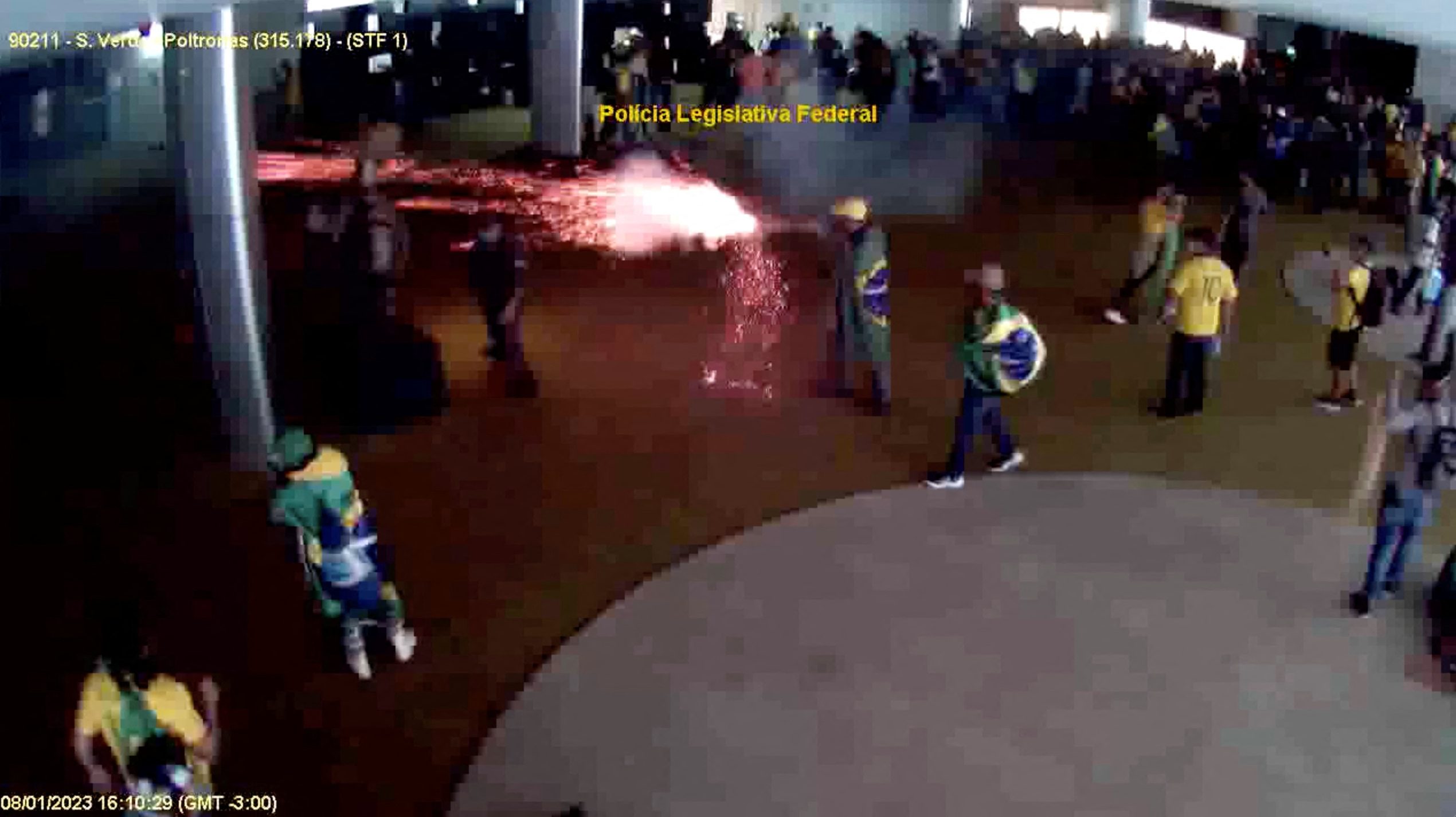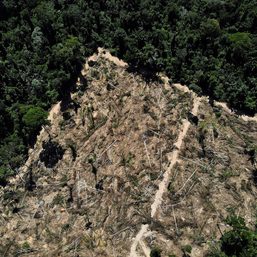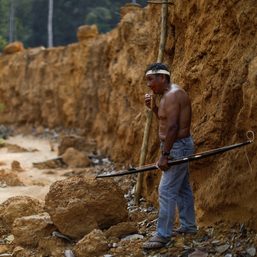SUMMARY
This is AI generated summarization, which may have errors. For context, always refer to the full article.

RIO DE JANEIRO, Brazil – Ten days were not enough for the main social networks to mobilize to find and remove from their depths posts that violate their own guidelines, and that were used to encourage the coupist attacks in Brazil on January 8th.
Since the invasion of the National Congress, the Brazilian Supreme Court (STF), and the Planalto Palace, the Lupa nos Golpistas database has received at least 2,173 non-repeated links that lead to six social networks: Instagram, Facebook, Twitter, YouTube, TikTok, and Kwai. These URLs were forwarded for having material that served to organize and disseminate the terrorist acts, or that encouraged vandalism.
- This content was produced by Lupa from the collaborative database of antidemocratic posts. Have you seen or received posts encouraging the coup-mongering acts? Click here and send it to Lupa.
- We are thankful for your collaboration and help. With support from everyone, we continue this collaborative project that seeks to understand how the vandalism acts in the Federal District were organized.
On Wednesday, January 18, at the request of Lupa, an exclusive survey done by Lagom Data shows that at least 1,651 – namely 76% – of these URLs remain active and could be accessed by any user.
Instagram, a social network managed by Meta, was the platform that was most reported to Lupa. Out of the 1,124 non-repeated links targeted as coupist, 683 remained online. One of these is a video, posted on the day of the acts, showing a man inside of a car defending the installation of “chaos in Brazil” so that the Army could intervene “to impose the Guarantee of Law and Order.” The recording accumulated more than 12 thousand likes until Wednesday afternoon.

A second video on Instagram, also filmed on the day of the failed coup attempt, shows a crowd walking towards The Square of the Three Powers, carrying signs that called for “military intervention” and shouting “Supreme is the people.”

In a third one, the destruction of the plenary of the Supreme Court from the inside is observed, followed by the phrase “The people has just entered the STF, where are the ‘iluministers’ and the egghead?” in a critical reference to the members of the Court.

The continuity of these links on air contradicts the guidelines published by Instagram itself – the platform informs that they are not “a place to support or praise terrorism, organized crime, or hate groups” and establishes that “serious threats of harm to public and personal safety aren’t allowed.”
In the network’s own words, this includes “specific threats of physical harm as well as threats of theft, vandalism, and other financial harm.” Regarding the coupist acts, there was also damage to public goods, as a preliminary report by The Institute of National Historical and Artistic Heritage (Iphan) shows.
Dissemination on Facebook
On Facebook, equally managed by Meta, the lack of moderation is also identified. The platform has clear policies for its users and, in them, it dedicates a large portion to violence and crime instigation. Among the listed consequences are the removal of content, the disabling of accounts, and the collaboration with law enforcement authorities when “a genuine risk of physical harm or direct threats to public safety” is noticed.
With a total of 539 coupist links reported to Lupa, the social network had removed or restricted access to only three of them – 536 remained active on Wednesday.
On Facebook posts showing, for example, images of a dominated Brasília were still available. In one of the antidemocratic contents, a woman wrote in English that “millions of Brazilians are marching now to take back the government” and added, “they will camp inside Congress as the aim to eradicate the illegitimate government.”

There is no proof that the elections of 2022 were rigged, or that the source code of the electronic ballots might have been corrupted in favor of specific candidates — those are, moreover, only some of the conspiratory theories shared by the bolsonarists after the victory of Luiz Inácio Lula da Silva in October.
Another example of content published on Facebook reported to Lupa nos Golpistas is a video where a man, dressed in green and yellow, shouts repeatedly: “We’ve invaded.” Besides saying that the police “is on our side,” he also called other people to join the acts: “Come over here, we need you.”

Other networks
Twitter had 370 nonrepeated URLs reported to the collaborative database on Lupa. 10 days later only three of them were no longer available. At least 75 reports came from TikTok, and until Wednesday afternoon, at least five links remained active. On Kwai, however, all of the 14 links reported were still accessible on Wednesday. On YouTube, 46 of the 51 links remained active.
On Twitter, for example, one of the contents still available was a two-minute video posted on January 7. The recording shows a map with lengths to the federal capital and “invites” the coupists to the already denounced “Festa da Selma” (Selma’s Party).

On Kwai, people show up calling caravans from Rondônia to Brasilia, giving clear instructions on how to get to the Esplanade of the Ministries and informing the users about other groups that would leave other states. In another video, a man shows the mobilization of the Military Forces and celebrates: “Let it be the beginning of the end of communism.”
Kwai says in its election policy that it defends the freedom of speech, but it doesn’t tolerate “content that has the potential to harm the democratic process.”

Finally, on TikTok, videos showing message exchanges where a person salutes another with the expression, “What’s up, terrorist?” remain active. After the exchange, the person is informed that there is a supposed pact between the coupists and the security forces of the Federal District so that they do not intervene in the action of January 8.

TikTok’s public guidelines say that the platform does not authorize its use “to threaten or incite violence or to promote violent extremist organizations, individuals, or acts.” They also reinforce that, “when there is a threat to public safety or an account is used to promote or glorify off-platform violence,” the content must be removed or the account will be banned. The platform adds that if “motivated” they will report the threats to the relevant legal authorities.
On YouTube however, where only 10% of the links reported to Lupa nos Golpistas were removed, it is possible to find content such as a live transmission broadcasted on the day of the acts titled “War in Brasilia.” The publication amassed more than 83 thousand views until Wednesday afternoon.

Lupa sought the platforms mentioned in this news piece, asking them to comment on the surveyed data and explain why they take so long to remove the antidemocratic contents. Until the publication of this news piece, only Facebook, Instagram, and Kwai had replied.
Kwai’s press office indicated in a note that its initiatives to contain the advance and the spread of content that have the potential to harm the democratic process “remain active.” It also detailed other measures to avoid the spread of the contents, such as reporting mechanisms.
Meta – responsible for Instagram and Facebook – informed in a note that identified Brazil as a “place of temporary high risk” before the elections and that resorted to “remove content that encouraged people to take on arms or to invade public buildings such as the Congress or the Planalto Palace.“ The enterprise also informed to be collaborating with the authorities and that will continue to remove content that violates their policies. They admitted, however, that in face of the “scale” of their services, “prohibiting determined content does not mean zero occurrences.” – Rappler.com
As a result of the attacks in Brasília, Lupa requests the collaboration of its followers to build a database that gathers antidemocratic posts published on social networks and messaging apps. This is a collaborative project that seeks to understand how these acts of vandalism were organized. If you have seen or heard some publication encouraging the attacks, collaborate by filling out this form. This content will be used for journalistic or research purposes, and may help in future investigations about the invasions on January 8, 2023.
This article has been republished with permission from Lupa.
Translation by Roger da Silva João
Add a comment
How does this make you feel?





There are no comments yet. Add your comment to start the conversation.